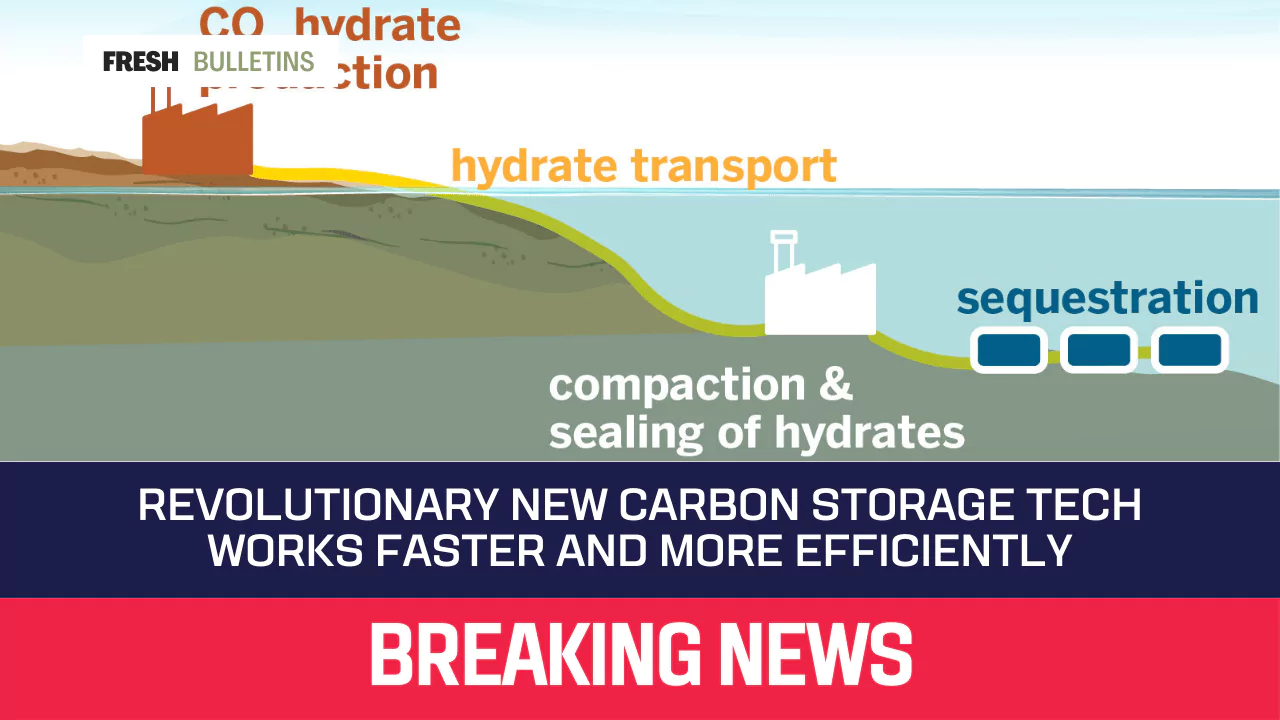Revolutionary New Carbon Storage Tech Works Faster and More Efficiently
In a recent breakthrough, researchers at The University of Texas at Austin have unveiled a revolutionary carbon storage technology that outperforms existing methods in terms of speed and efficiency.
The novel approach involves the rapid formation of carbon dioxide hydrates, ice-like materials that can effectively sequester carbon dioxide in the ocean.
This innovative technique, recently detailed in ACS Sustainable Chemistry & Engineering, introduces a new era in carbon capture and storage, offering a swift and eco-friendly solution to the pressing issue of carbon removal from the atmosphere.
Exploring New Carbon Storage Technology
The University of Texas at Austin has developed a groundbreaking method for storing carbon captured from the atmosphere, which is proven to work much faster than current techniques without the use of harmful chemical accelerants. This innovative approach, recently published in ACS Sustainable Chemistry & Engineering, involves the ultrafast formation of carbon dioxide hydrates, unique ice-like materials capable of sequestering carbon dioxide in the ocean, thereby preventing its release into the atmosphere.
The lead researcher, Vaibhav Bahadur, a professor in the Walker Department of Mechanical Engineering at The University of Texas at Austin, highlights the significance of this technology in addressing the global challenge of safely removing gigatons of carbon from the atmosphere. The ultrafast formation of hydrates, achieved without the need for chemical promoters, represents a major advancement in the field of carbon capture and storage.
Advantages of Enhanced Carbon Storage Methods
This new carbon storage technology offers several advantages over traditional methods. Firstly, it demonstrates a sixfold increase in the rate of hydrate formation compared with previous techniques, making it significantly more efficient. Furthermore, the absence of harmful chemical accelerants in the process ensures that the environmental benefits of carbon capture remain uncompromised.
The technology’s swift and chemical-free nature facilitates mass-scale carbon storage, making it an attractive solution for global carbon management. Its compatibility with seawater also eliminates the need for complex desalination processes, thereby simplifying its implementation and increasing accessibility to countries with coastlines.
Innovations in Carbon Capture and Storage
The University of Texas at Austin’s research signifies a leap in carbon capture and storage innovation. The synthesized ice-like materials, capable of rapid and chemical-free carbon capture, provide a promising solution for the long-term storage of carbon dioxide in the ocean. This breakthrough technology also opens avenues for its application in desalination, gas separation, and gas storage, indicating a versatile and multifaceted approach to addressing environmental challenges.
In addition to carbon sequestration, the ultrafast formation of carbon dioxide hydrates has potential applications in the electrochemical conversion of CO2 to valuable products. This demonstrates the far-reaching impact of this technology beyond carbon storage, with implications for addressing wider sustainability challenges and contributing to the development of a circular carbon economy.
In conclusion, the University of Texas at Austin’s revolutionary carbon storage technology represents a pivotal advancement in the quest for sustainable environmental solutions. Its rapid and chemical-free nature, combined with its potential for global scalability, positions it as a leading contender in the drive for effective carbon capture and storage, offering significant promise for a sustainable future.






